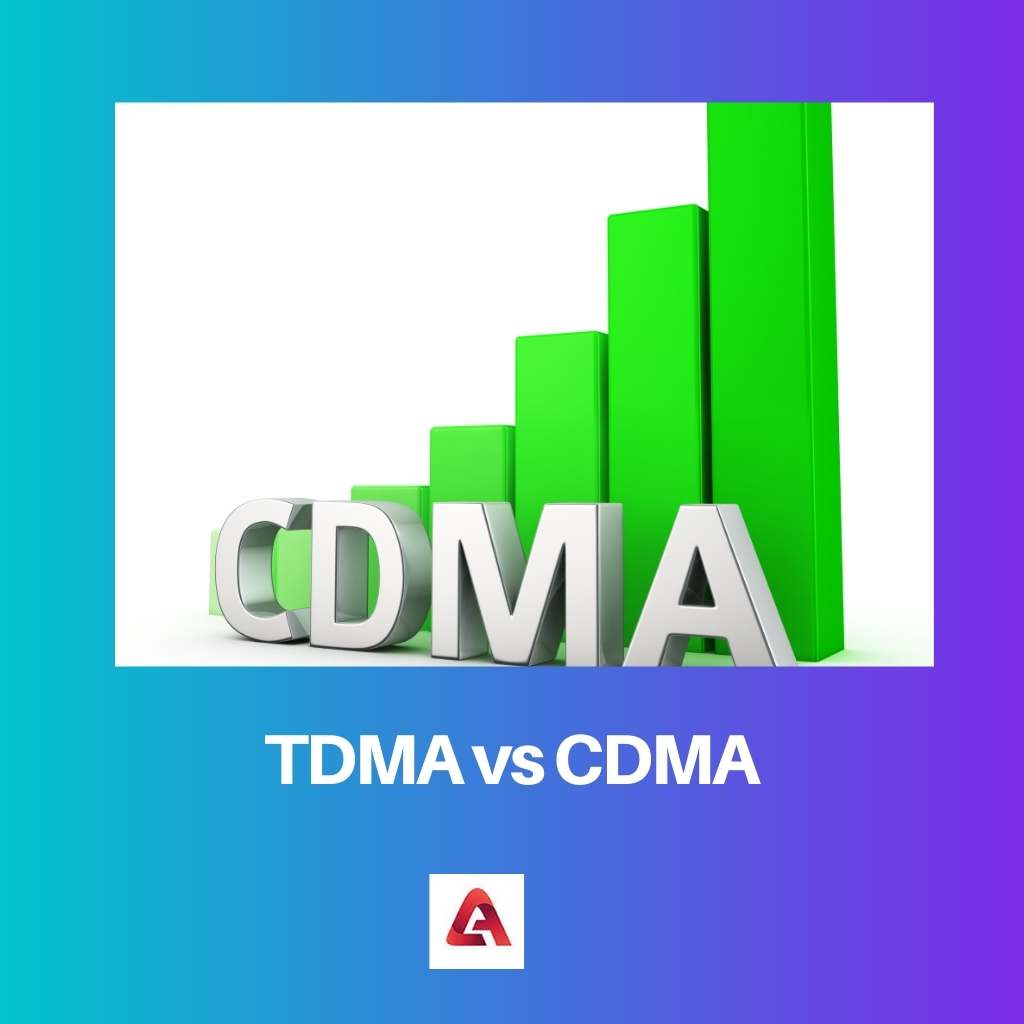Because the amount of possible routes is relatively restricted, industry executives and engineers have predicted the eventual congestion of concurrent calls since the creation and marketing of cellular networks.
RF industry experts are increasingly employing techniques to address these issues. TDMA and CDMA are two examples of such techniques.
The multiple access technique is chosen during the design and standardization of cellular networks. So, to understand the two techniques, this article is here to help out with the differences and features between TDMA and CDMA using important pointers to remember and a descriptive table.
Key Takeaways
- TDMA allocates time slots to users for data transmission, while CDMA assigns unique codes for simultaneous communication.
- CDMA offers higher capacity and better call quality than TDMA due to its code-based division.
- TDMA has a simpler design and lower power consumption, whereas CDMA provides more efficient bandwidth use.
TDMA vs CDMA
TDMA divides a single frequency channel into multiple time slots, so multiple users can share the same frequency channel by transmitting their signals in different time slots. CDMA allows multiple users to transmit their signals over the same frequency band by giving each user a unique code.

TDMA is an abbreviation for Time Division Multiple Access. Instead of splitting the principal RF bandwidth into two or more inter-channels, TDMA divides it into two-time frames.
Each slot has the same RF spectrum as the others, yet they are capable of holding independent conversations.
If the primary channel is split into four-time frames, for example, each one will take a fourth of the initial time to send the data and content.
CDMA does not divide the entire RF bandwidth into successive time slots or inter-channel but instead provides each one a special identifier.
Unlike the TDMA technique, CDMA transmits at the same frequencies in every position. In addition, unlike TDMA, CDMA transmits single slots at the same time.
CDMA combines the advantages of both methods (TDMA and FDMA), allowing several users to share the same frequency range while being differentiated by a code.
Comparison Table
| Parameters of Comparison | TDMA | CDMA |
|---|---|---|
| Full Form | Time Division Multiple Access | Code Division Multiple-Access |
| Sync and Code Requirement | Crucial synchronization and no code word is required. | Sync is not required, and code words are required. |
| Cost | The overall cost is lower than CDMA. | Plantation cost is very high, but monthly maintenance cost is pretty less. |
| Flexibility and Efficiency | Medium flexibility in operation and execution. | Highly flexible and very much efficient when compared to TDMA. |
| Mode of Operation | The timing of broadcast through satellite is the only thing that TDMA shares, not the stream. | The CDMA distributes both network bandwidth among multiple stations by giving a distinct code to each slot. |
What is TDMA?
The term TDMA is an acronym for “Time-Division Multiple Access.” In this technique, the channel is chopped or divided into successive temporal parts using TDMA sub-channels.
Users of the route will take turns reading and sending data in a round-robin fashion.
When you break this down, the channel is only used by a single person at any particular time.
Each user only utilizes the channel for brief periods, and his or her right to use resources is temporarily revoked to allow individuals to use the stream.
Actually, TDMA has remained a part of GSM for a long time, despite the fact that it is an outdated technology rapidly becoming outdated.
FDMA was more common in conventional systems and was utilized in 2G networks before being superseded by TDMA innovation.
The connection of a user going through one cell to another is dropped, and the user is instantly accessed through the internet to which he or she is migrating in TDMA.
FDMA was more common in conventional systems and was utilized in 2G networks before being superseded by TDMA innovation.
The connection of a user going through one cell to another is dropped, and the user is instantly accessed through the internet to which he or she is migrating in TDMA.
What is CDMA?
CDMA is an acronym for Code Division Multiple-Access. It’s also a combination in which many signals can share a single communication path.
With the exception of TDMA, CDMA allows several users to share the very same channel simultaneously at the same time span.
As a result, several users are concurrently sending and receiving data.
Multicast, a form of modification that takes each user’s flow of binary digits and distributes them throughout the stream in a pseudo-random way, is the only way to do this.
The recipient analyses the jumbled bits or, to put it another way, un-randomizes them to make them intelligible.
The principal RF channel is divided into four coded slots using CDMA. Each slot may hold a different discussion.
Because the receivers can only reassemble data sets from an emitter with the same coding, this is the case. However, there is a problem with this technique.
Although the receiver receives and decodes signal with various implementations and frequencies, they resurface as noise.
This implies that as the overall user base grows, so does the noise exposure on any specific system. As a result, it has an impact on total coverage.
Main Differences Between TDMA and CDMA
- TDMA stands for Time Division Multiple Access, whereas CDMA stands for Code Division Multiple-Access.
- TDMA is compatible with GSM 2G technology, whereas CDMA is compatible with some modules of WCDMA 3G networks.
- TDMA allows a single user to use the channel, whereas CDMA can handle multiple users at the same time in one channel.
- TDMA setup and maintenance costs are lower than CDMA maintenance and setup cost.
- No codeword is required in TDMA, whereas codeword is necessary for the CDMA technique.





